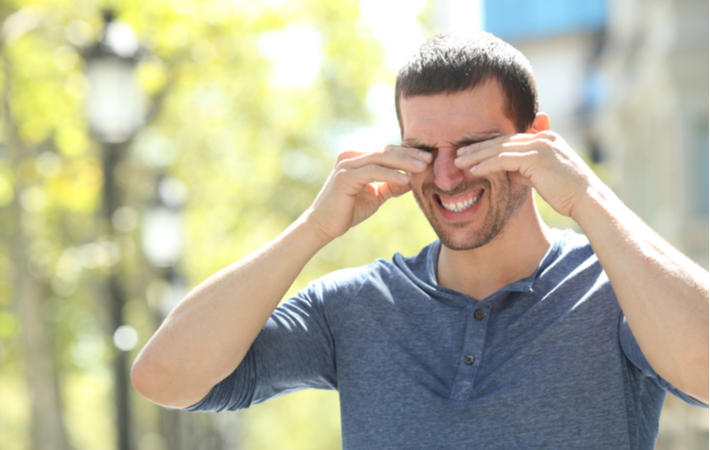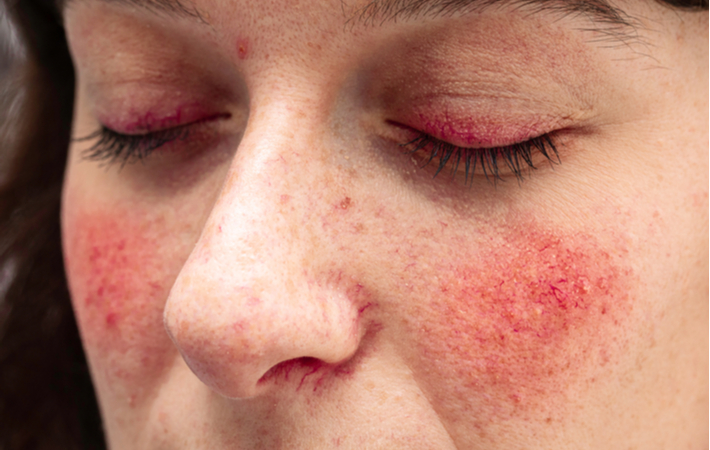These days, it seems like every eye care practice offers some kind of dry eye treatment, and there’s a good reason for that. The last few years have shown eye care professionals exactly how prominent and disruptive dry eye disease can be.
But even though most people understand dry eye treatments are available, I find that so few people actually know what treatments are available to them. Obviously, prescription and over-the-counter eye drops are an option. But there are so many more treatments that could give you relief from awful dry eye symptoms.
For instance, there are in-office dry eye treatments that can help alleviate or eliminate your dry eye symptoms. One of the in-office treatments we’ve recently added at our practice is called BlephEx.
As an optometrist, it can be frustrating to know that there are treatments available to help your patients, but if your patients don’t know about them, they can’t do anyone any good. That’s why I’d like to spend a little bit of time talking about BlephEx, how it works, and whether it could help your dry eye symptoms.
What is Bleph-Ex?
BlephEx is an in-office treatment, meaning you come into the office, and your optometrist performs the treatment on you rather than prescribing you some kind of medication to take home. Blephex was initially designed to treat a different condition called blepharitis.

Doctors agree that there seems to be some link between blepharitis and dry eye disease. However, it’s unclear whether dry eye causes blepharitis, blepharitis causes dry eye, or neither one causes the other but they do compound each others’ symptoms.
How Does It Work?
BlephEx treatments are performed with a small handheld device. The device has a very small sponge on the end of it, which spins when the handset is turned on. The optometrist performs the procedure by applying the sponge along your eyelash line.
As the sponge spins, it gently clears away dead skin cells and other debris that can collect there. The treatment is sort of like brushing your teeth, only the whole process much gentler, so it doesn’t injure your eyes.
Is It Necessary?
We’ve established that BlephEx is sort of like the ocular version of brushing your teeth. But why is that necessary? It’s not like your eyes can develop plaque, right?
Well actually, your eyes can absolutely develop plaque.
As your eyelids shed skin cells, and you put on and remove makeup, and your eyes produce discharge, and you go about your day-to-day life, the skin of your eyelids can collect a buildup of all of these cells. The cells create a perfect feeding ground for bacteria, which then can basically create a micro-ecosystem called a biofilm.
BlephEx helps clear away this debris, eliminating existing biofilm or reducing the potential of developing a new biofilm in the near future.
How Do Biofilm & Blepharitis Relate to Dry Eye
If a biofilm isn’t cleared away, it will continue to grow. Eventually, the biofilm can be severe enough to block your meibomian glands.
The meibomian glands are very small glands that produce an oil called meibum, which keeps your tears from evaporating too quickly. If those glands become blocked, there is nothing to keep your tears from evaporating off the surface of your eye. This problem is called meibomian gland dysfunction, and it is the most common cause of dry eye disease today.
While we don’t know that blepharitis necessarily causes dry eye, it can definitely impact and exacerbate the symptoms. Blepharitis is an inflammation of the eyelids, sometimes due to bacterial or fungal infection (which can stem from biofilm buildup) and sometimes due to other skin conditions like rosacea.

The eyelids’ inflammation can cause the meibomian glands to swell, making it difficult for the glands to secrete the appropriate amount of meibum.
Is it Safe?
BlephEx is safe for patients of all ages. We don’t necessarily recommend BlephEx for very small children, as patients should be able to sit still during the treatment. However, children are also less likely to develop blepharitis or meibomian gland dysfunction than adults.
The device is specially designed to be used on the delicate tissues around your eye. It is operated by an optometrist who is trained to perform the treatment. We do not recommend trying to replicate the treatment at home with any kind of device, as it could seriously injure you.
Can BlephEx Cure Dry Eye or Blepharitis?
The term “cure” is a tricky one that medical professionals usually avoid. It implies that after using a product, the problem disappears, never to be seen again. That’s not necessarily true for a few reasons.
Removing biofilm and debris from your lash line will absolutely benefit your meibomian gland and reduce your dry eye symptoms. But that’s not to say that in a year or more, that biofilm won’t build back up again and start impacting your tear quality.
Don’t get me wrong, BlephEx can greatly reduce the discomfort and frustration that comes from dry eye disease and blepharitis. It’s just important to remember that, just like a professional tooth cleaning, it’s a treatment that should be done once a year, or at the discretion of your optometrist.
If you have the procedure done often enough before your symptoms become noticeable, then yes, it is certainly possible that you will never experience chronic dry or blepharitis symptoms again.

Is BlephEx Worth It?
I believe that BlephEx is worth the cost of treatment. Now, I understand that as an optometrist who offers BlephEx, this may seem like a self-serving conclusion. But the truth is, I’ve seen dry eye make a pretty significant impact on people’s lives and visual health.
Treat vision issues and preserving eye health is my job. I believe that, when used properly, BlephEx could prevent significant discomfort, daily irritation, and even damage to the corneal surface. I would encourage you to ask your optometrist if BlephEx would benefit your eyes.




